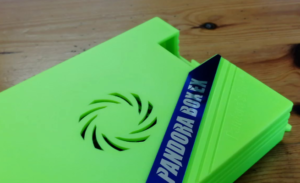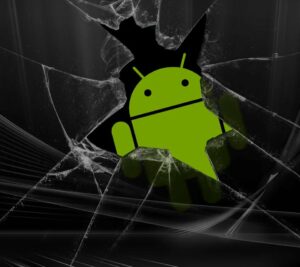So you’ve seen an advert for a Pandora Box, you have a wad of cash burning a hole in your pocket and you’re ready to purchase, but you don’t know exactly how these machines work or which is best? No problem.. the one that you found has more games than the rest, so it should be the best, right? Maybe you have asked on Facebook and one guy has suggested that a DX is a good purchase, but you’re still unsure? Don’t panic! This guide is here to help you make the right choice.
Okay. How do we go about this?
There are seven rules to follow when buying a Pandora box:
- Do not attempt to compare specifications. Half is wrong and half is “dishonest marketing”. Some boxes have great hardware, but poor software. Others will have great software, but poor hardware. The combination of the two is what matters. Some will be just awful. Don’t choose one console over the other because one can do Full-HD and one cannot.
- Choose a machine depending on your type of screen. If you have a large old-school arcade with a beefy CRT inside, you may need a console that can do so called “CGA” output. Many boards out there are designed specifically for flat-panel TVs, so you need to be careful.
- Higher numbered Pandora’s box does NOT mean better quality, neither does a newer release date or the number of games. If you see a “Pandora HX 16000 Game 2021 Edition – Newest Model”, this is usually a sign of cleverly crafted dodgy marketing to try and make you compare by numbers. You will usually end up with a sub-par machine for a premium price. There are various consoles with certain numbers of games that can be considered ‘good’. Never choose the machine with the largest amount of games if you are unsure.
- Choose by what games you want to play. Google the games first, ask on Facebook if someone has the game working already.
- Always, ALWAYS look at the motherboard (inside the machine) or at least confirm with the seller it is the one you want to buy. Motherboards without numbers/revision codes are usually a very bad sign. There are some ‘known-good’ motherboards which we describe later.
- Almost always avoid any machine with the suffix “S”. It doesn’t stand for ‘shiny’.
There are a few exceptions: the 18S is a good board, and to a lesser extent the 12S and 28S (H3MM variants), which are good but slightly less powerful than the boards we’re about to describe below. Beware though, there are some 12S models which are not H3MM and are completely awful! If you are unsure, avoid! - Don’t always listen to the “sixers” (see the next section).
A brief bit of history
At the beginning, there was a company called 3A. This company made the first, i.e. the “official” Pandora’s Box. Soon afterwards, copies of this box appeared, which people referred to as “clones”. Clones were seen as inferior and many of the first copies really were, sporting single-core processors or cheap hardware. This has led to a mass of early adopters who will swear blind that the only boards to buy are the 3A boards and that you should avoid any other type of box. They will recommend, almost without exception, the Pandora Box 6, the Pandora Box DX and the Pandora Box CX. These people we affectionately refer to as “sixers”. They are making good suggestions and avoiding clones was a very sensible thing to do until around the end of 2018, but unfortunately times have been changing and there are other things to take into account while purchasing. The term “clone” has become diluted and almost meaningless. There are only now “good Pandora Boxes and bad Pandora boxes”. Be warned: there are still many awful machines out there, so you have to tread carefully, but with this guide, you will be able to chose the right machine.

The software
Almost all of the original boxes and clones run a modified version of Linux. The official boxes are very locked down in an attempt to stop you modifying the system and also to stop competitors copying the consoles. This also means, unfortunately, that a lot of boxes don’t give you a lot of flexibility to change anything.
From about 2018 onwards, versions of the Pandora started to appear using Android instead of Linux as a base. One of these machines was called the “Heroes 5”, which used an Android distribution developed by an ominous entity from China called ‘Moorechip’. This machine, for the first time, started to give the official machines a run for their money. Since then, this variant has evolved into the Pandora Games 3D, the Pandora Box 9H, the Pandora Box 14, the Pandora Games 3D Saga and the Pandora Games 3D+. Each of these machines uses continually improved hardware/software and updated software and some boards opened up the Pandora world to emulators that were previously unseen on other consoles: Dreamcast & PSP.
There was, however, another advantage to these machines; you could extract the firmware and many little helper programs were found inside which could improve the quality of life of these systems. For example: a way was found to use these “on-board” tools to install games that were previously unavailable to the system. Also, various flaws were found in the firmware to allow the execution of Android software that would not usually be available (e.g. RetroArch, or many other extra emulators).
That’s great guys, but what do I buy?
It’s not that cut and dry, but there is a shortcut for one set of people; if you have a 4:3 15khz arcade machine, have a JAMMA connector and you are looking for a Pandora box, get the JAMMA variant of the Pandora Box DX, CX or the 6. These support that lovely 15khz CGA via the JAMMA edge.

The DX is known to be temperamental with some monitors but is the newest. You can go now. Bye!
What is JAMMA? Does that make it better? Should I care?
JAMMA stands for Japan Amusement Machine and Marketing Association. For the layman, it’s a standardized plug that you can connect your arcade machine to, and quickly get playing a new game.

Rather than whole arcade cabinets being changed out for new ones, the board inside could be changed out easily, as it shared the same (JAMMA) connector- which saved a lot of money as well as time and effort by the arcade operator.
The only people that really should care about JAMMA are those with an arcade machine that supports it and they want to keep it as close to the original as possible. Perhaps they want to use their original boards every now and then.
It doesn’t make the experience any better to have a JAMMA Pandora Board. If anything, you only limit your choices.
I don’t have an arcade machine. I want this for my flat screen TV.
If you have a flat screen TV (or monitor with HDMI / VGA input), you now have to decide what you want to play. If you want easy-access, no-nonsense arcade 2D games with high-score support, the ability to play PS1 games, the possibility of (mostly) being able to add the games you like but nothing much else, you would not go amazingly wrong with a Linux based machine such as the Pandora Box CX/DX.
Performance-wise, it is a mid-range unit- but it has a good community if you just want a ‘turn it on and play’ machine.
When hooked up to HDMI, all games may be stretched to full screen, unless you manually correct it in your TV settings. You can change resolution whilst using VGA by holding the setting button on boot-up. This will switch the unit to either 720p, or 640×480 (JAMMA has an extra 384×224). Using VGA on a flat screen TV will not always correct your ratio, so you may end up with a fat Chun-Li. Some people are into this.

But if you want newer, more accurate emulators, the possibility to add thousands of games, add tweaks, correct the aspect-ratio automatically, play PSP, Dreamcast, add RetroArch, watch Netflix and more, you might want to consider a Moorechip-based machine. Be aware; some of these tweaks and modifications aren’t available out of the box and require extra software, following a few YouTube videos etc., but depending on your needs, one of these machines might be for you.
Alright, alright, I’m considering Moorechip, but which one?

The Moorechip consoles began to vastly improve roughly around July 2019, from the Pandora Games 3D onwards. The 9H and 14 are commendable, but are slightly underpowered and are more directly comparable spec-wise with the 3A machines. These two machines do not run Mortal Kombat 2 very well, if you were thinking of asking.
Most also have Wi-Fi and give you access to a ‘Wi-Fi store’ to download games. It isn’t great, but it’s extremely easy for the beginner to start adding titles to their arsenal. Limitations to this include: badly set up titles, no video snapshot and incorrect title names. – Pandory is a better way of installing additional games if the need arises
The Pandora Games 3D variants:
Here is the boring bit, but is important to know:
The Pandora Games 3D has several versions. They all have a “NAND” (onboard storage for the firmware) and they store their games on SD card.
“Late 2018” – 2200 Games, blue GB3000 motherboard, revision 1.2 with a firmware date 20181221 (thanks for the addition, zerojay).
“Mid 2019” – 2448 Games, blue GB3000 motherboard, revision 1.3 with a firmware date around July 2019.
“Fall 2019” – 2448 Games, blue GB3000 motherboard, revision 1.3 with a firmware date 20191017.
“Late 2019” – 2448 Games, blue GB3000 motherboard, revision 1.4 with a firmware date 20200217.
“Early 2020” – 4018 Games, blue GB3000 motherboard, revision 1.4 with a firmware date of 20200704 onwards. With this revision, the Pandora Games 3D disappeared and became the 4018 Game Pandora Games 3D+. Old 3D stock was sold on with a modified SD card which contained 4018 games and many sellers just failed to mention that the machine wasn’t really a 3D+.

To make things a little more complicated, a variation of the Pandora Games 3D, the Pandora Games 3D Saga appeared around September 2019 using a green PSA S812-001 motherboard. It has either 2650 or 4188 games. It uses a firmware date of 20190826. It also has alternate names, such as the 18S. One variant even pretends to be a 3D+, but is only using the 3D+ skin while maintaining the older firmware. This board has no NAND, the complete software is on the SD card, meaning it is virtually unbrickable.

Well the good news is that all of the above revisions are good, without exception, and they all have reasonably comparable performance, specification-wise. However, some hardware/software combinations are more desirable than others.
It is also important to note at this stage that the 3D+ and the 3D are identical except for a different sized NAND on the 3D+.
Firmware 20191017 and below:
- NAND unencrypted.
- MicroSD encrypted.
- has a couple of bugs like the Megadrive icon being an Xbox icon and poor wireless controller support.
- FBA Overclock support.
- No PlayStation savestate support.
Firmware 20200217:
- Considered the best firmware so far.
- NAND unencrypted.
- MicroSD encrypted.
- FBA Overclock support.
- Better controller support.
- Fixed Megadrive icon.
- No PlayStation savestate support.
Firmware 20200704/20200811:
- NAND encrypted.
- MicroSD unencrypted.
- Performance generally than on the Pandora Games 3D.
- Butchered emulators. Many emulators have been replaced with less-flexible modified RetroArch-based cores.
- PlayStation savestate support.
- More controller support than the 3D.
- Boots up slower than the 3D due to the NAND encryption.
Okay so they’re all good, but the 3D+ sounds a bit wobbly. Which one to get?
Reading between the lines in the above list, you would probably conclude that a GB3000 board with 20200217 firmware is the best revision, and you would probably be right. However this variant has now disappeared from stores and you can only really get these machines used, but there is an advantage to all the boards after 20200217: they can be downgraded, although this will block your access to the online store. You could purchase a 3D+ board with firmware 2020704 or 20200811 and downgrade to 20200217, which would allow you to access the better emulators, and also to overclock certain slower arcade titles, such as Metal Slug 2 and Shock Troopers 2.

However, there is a secret champion among these variants; the Saga 3D 4188. The PSA board has perceived input lag improvements when compared to the GB3000 board and, with tweaking, can be upgraded to the 20200217 firmware, giving you the best of both worlds and also with the added advantage that the system is virtually unbrickable, as there is no onboard NAND that may go faulty/get corrupted over time.
Verdict: Get any of the above boards; either the official DX/CX/6 or a Moorechip-based GB3000 or PSA S812-001 android board. Avoid ANY other as it will usually be a low powered, disappointing, Linux variant. They are all good, even with default firmware. Our personal favourite is the Saga 4188, but pick one to suit your needs. Watch some YouTube reviews before you buy, and if you want to go the extra mile, forgo the online store and down/upgrade your firmware to a better version for an even better experience.
Epilogue: we have deliberately not mentioned the RX/trimui Treasure I/II/Key7 consoles. These are not bad consoles, but have their own set of merits and restrictions. That is, however, a topic for another article!
If you’d like to see the breakdown of our top ten Pandora boxes, check our video on it here:
If you’d like to purchase a unit, check our list here. Affiliate links help our website survive.
By the way; we’re the authors of Pandorytool, a tool to add games and improve the general quality of the Pandora Games 3D (and variants). Come and visit us on YouTube!




